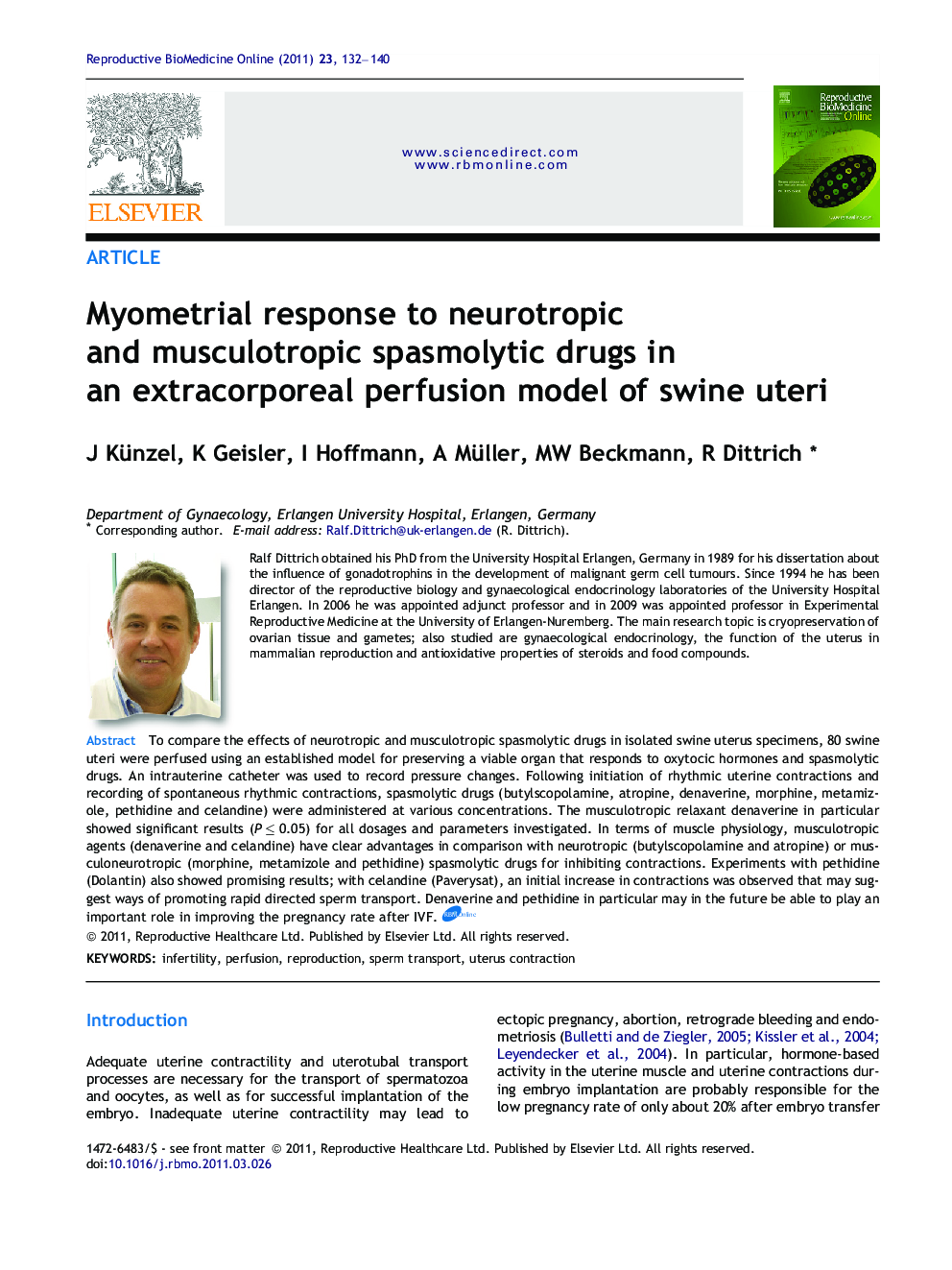| Article ID | Journal | Published Year | Pages | File Type |
|---|---|---|---|---|
| 3971485 | Reproductive BioMedicine Online | 2011 | 9 Pages |
To compare the effects of neurotropic and musculotropic spasmolytic drugs in isolated swine uterus specimens, 80 swine uteri were perfused using an established model for preserving a viable organ that responds to oxytocic hormones and spasmolytic drugs. An intrauterine catheter was used to record pressure changes. Following initiation of rhythmic uterine contractions and recording of spontaneous rhythmic contractions, spasmolytic drugs (butylscopolamine, atropine, denaverine, morphine, metamizole, pethidine and celandine) were administered at various concentrations. The musculotropic relaxant denaverine in particular showed significant results (P ⩽ 0.05) for all dosages and parameters investigated. In terms of muscle physiology, musculotropic agents (denaverine and celandine) have clear advantages in comparison with neurotropic (butylscopolamine and atropine) or musculoneurotropic (morphine, metamizole and pethidine) spasmolytic drugs for inhibiting contractions. Experiments with pethidine (Dolantin) also showed promising results; with celandine (Paverysat), an initial increase in contractions was observed that may suggest ways of promoting rapid directed sperm transport. Denaverine and pethidine in particular may in the future be able to play an important role in improving the pregnancy rate after IVF.Uterine contractions are important not only for labour, but also for the transport of semen and the oocyte. Contraction inducing-medicaments, such as oxytocin or the various prostaglandins, are used in everyday practice. These medicaments, however, interact with the arterial pressure which can be of utmost importance in hypertonic or pre-eclamptic patients. Using perfused swine uteri, which we obtained from the slaughterhouse, we were able to examine which substances can be safely used to influence the uterine contractility with the lowest rise in the arterial pressure. In these experiments we examined a group of drugs known as spasmolytic drugs. Denaverine and pethidine (Dolantin) showed promising results. In view of the latest research, the physiology of the menstrual cycle and the standard embryo-transfer technique, it appears that a combination of different drugs that are capable of positively reducing uterine contractions currently provides the best conditions for preparing the uterus sufficiently for embryo implantation. Denaverine and pethidine may in the future be candidates for improving the pregnancy rate after IVF.
